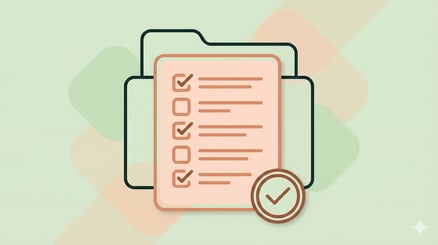What is the Healing Time for Rhinoplasty?
A Roadmap to Rhinoplasty Recovery
Embarking on the transformative journey of rhinoplasty, individuals open a chapter of expectations, changes, and curiosity about the healing process. The postoperative period is a crucial phase, where the magic happens, and the reshaped nose emerges.
In this guide, we'll take a closer look at the various facets of rhinoplasty recovery, addressing the key questions on everyone's mind: How long does the healing process take? What about persistent swelling? And how enduring are the results?
At the heart of the rhinoplasty journey lies the recovery period. Each individual's path is unique, with a personalized timeline for healing. The initial days post-surgery may bring visible swelling and bruising, but as the weeks unfold, a transformation takes shape in plastic surgery. Understanding the duration of rhinoplasty recovery is vital, allowing individuals to anticipate the milestones along the way. Nasal surgery, including procedures like rhinoplasty and septum surgery, can significantly improve both the appearance and function of the nose.
Blowing your nose, and swelling is an inevitable companion on the road to rhinoplasty recovery. While the immediate swelling recedes within the first month, a subtle presence may linger for months. Rhinoplasty surgeons are skilled professionals who specialize in reshaping the nasal bones and cartilage to achieve desired aesthetic outcomes.
Navigating this phase requires patience and a partnership with a skilled surgeon who monitors the progress, ensuring that the swelling aligns with the expected timeline.
The allure of rhinoplasty lies not just in the immediate changes but in the enduring transformation it brings. Once the healing process concludes, the results are considered permanent. However, the journey doesn't end there.
Regular follow-ups with the surgeon become the compass guiding individuals toward the preservation of their refined and enhanced nasal aesthetics. Patients with a history of previous nasal surgeries may benefit from additional procedures to address ongoing concerns or complications.
As we venture into the realm of rhinoplasty recovery, this guide aims to illuminate the path ahead, providing insights into the duration of healing, the persistence of swelling, and the long-term marvels that await.
The next sections will delve into each aspect, offering a comprehensive understanding of what individuals can expect as they navigate the road to rhinoplasty recovery.
Navigating the Healing Process After Rhinoplasty
The Initial Days: Immediately after rhinoplasty, patients can expect some swelling and bruising around the nose and eye area. It's vital to follow the surgeon's post-operative instructions diligently during this initial phase of bone and cartilage.
First Week Post-Surgery: In the first week, most patients experience a significant reduction in swelling. While some bruising may persist, the initial discomfort starts to subside. Patients are generally advised to avoid strenuous activities and keep their heads elevated during sleep to aid the healing process.
Two to Four Weeks Mark: As the second week unfolds, noticeable improvements continue. By the end of the first month, a substantial portion of the swelling typically resolves.
Patients can often resume more regular activities, though it's crucial to remain cautious and follow any specific guidelines provided by the surgeon.
Months Following Surgery: While the majority of swelling resolves within the first month, subtle residual swelling may persist for several months. Patients should be patient, as the final results become more apparent over time. It's essential to attend follow-up appointments with the surgeon to monitor progress.
Long-Term Healing: Complete healing and the final aesthetic outcome may take several months to a year. Nasal tissues continue to settle, and any residual swelling gradually dissipates. It's during this extended period that the refined contours of the nose become fully apparent.
The healing journey after rhinoplasty is a gradual and evolving process. By understanding the various phases and timelines, individuals can better prepare for the recovery ahead and ultimately enjoy the transformative results of their rhinoplasty experience.
Our mission is to create a world where every investment in modern beaty is Worth It.
Let's keep in touch
Get updates of the treatments you are interested
Unveiling the Duration of Swelling After Rhinoplasty
Immediate Swelling: Right after the surgery, immediate swelling is expected. This initial swelling is a natural response to the surgical changes made to the nose. It's typical for patients to notice puffiness and potential bruising in the days following the procedure.
First Few Weeks: In the first two weeks post-surgery, a substantial amount of the initial swelling begins to subside. During this period, patients may still experience mild to moderate swelling, but noticeable improvement occurs, revealing the nascent contours of the reshaped nose.
Months Down the Road: While the majority of visible swelling diminishes in the initial weeks, subtle swelling can persist for several months. Patients should be aware that the nose continues to refine and settle during this time. The final results become more apparent as the last remnants of swelling dissipate.
Individual Variations: It's essential to note that the duration of swelling can vary among individuals. Factors such as the extent of surgery, individual healing tendencies, and post-operative care contribute to this variability.
Surgeons closely monitor the progress during follow-up appointments, ensuring that the healing trajectory aligns with expectations.
The duration of swelling after rhinoplasty is a dynamic process. While the immediate effects are noticeable in the initial weeks, the complete resolution of swelling may take several months. Rhinoplasty surgery is often sought after by individuals looking to enhance their nasal appearance or alleviate breathing difficulties caused by septal deviations.
Cenk Teker MD emphasizes the importance of...
Factors influencing rhinoplasty cost include the surgeon's expertise, location, facility fees, and the complexity of the procedure. Finding the best rhinoplasty surgeon involves evaluating qualifications, experience, patient satisfaction, and before-and-after results.
Turkey is renowned for its high-quality and affordable rhinoplasty procedures, attracting patients from around the world.

Understanding the Longevity of Rhinoplasty Results
The question often arises: How long does rhinoplasty last? Let's embark on a brief exploration to grasp the dynamics of the durability of rhinoplasty results.
Rhinoplasty's Permanence: A Lifetime Enhancement
However, the concept of permanence doesn't imply immunity to the natural aging process. While the nose retains its reshaped form, the overall facial features may undergo subtle changes over time.
Partnering with Longevity Post-Operative Care
Regular follow-up appointments allow the surgeon to monitor the healing process, address any concerns, and provide guidance on maintaining the results for years to come.

Aging Gracefully with Rhinoplasty
Embracing the natural aging process becomes part of the journey, with rhinoplasty enhancing and preserving the overall facial balance.
The longevity of rhinoplasty results extends throughout a lifetime, offering a enduring enhancement that harmonizes with the natural aging process. Through attentive post-operative care and collaboration with a skilled surgeon, individuals can relish in the timeless beauty sculpted by rhinoplasty.
Understanding Rhinoplasty Recovery
In the initial stages of post-rhinoplasty surgery, it's crucial to avoid vigorous nose blowing. This precaution safeguards the delicate nasal passages and promotes a seamless recovery.
Planning your rhinoplasty around a timeframe that accommodates a week of return the work is advisable. This duration allows for the initial stages of recovery, ensuring you feel comfortable before resuming regular activities.
Understanding the rhinoplasty recovery timeline is essential. While individual experiences may vary, patients typically start feeling more comfortable a week after surgery. However, the complete recovery period extends beyond this, requiring patience for optimal results.
Protecting your nose from excessive sun exposure during the healing phase is paramount. Sunscreen and shading can prevent complications and aid in maintaining healthy blood flow. Correcting issues with the bony nasal septum can lead to improved nasal airflow and overall respiratory function.
Following the guidance of your plastic surgeon is crucial. They will provide personalized instructions to navigate the recovery process effectively. Skilled rhinoplasty surgeons possess the expertise to delicately manipulate nasal structures, ensuring both cosmetic harmony and functional improvement.
By embracing these insights, you empower yourself for a successful rhinoplasty recovery, ensuring the best possible outcome for your nose surgery journey. Nasal surgery, particularly when involving the septum, requires careful evaluation and planning to achieve optimal results and minimize risks.
Advances in nasal surgery techniques and technology continue to expand treatment options and improve outcomes for patients seeking nasal enhancement or correction.
A Roadmap to Rhinoplasty Recovery
Embarking on the transformative journey of rhinoplasty, individuals open a chapter of expectations, changes, and curiosity about the healing process. The postoperative period is a crucial phase, where the magic happens, and the reshaped nose emerges.
In this guide, we'll take a closer look at the various facets of rhinoplasty recovery, addressing the key questions on everyone's mind: How long does the healing process take? What about persistent swelling? And how enduring are the results?
At the heart of the rhinoplasty journey lies the recovery period. Each individual's path is unique, with a personalized timeline for healing. The initial days post-surgery may bring visible swelling and bruising, but as the weeks unfold, a transformation takes shape in plastic surgery. Understanding the duration of rhinoplasty recovery is vital, allowing individuals to anticipate the milestones along the way. Nasal surgery, including procedures like rhinoplasty and septum surgery, can significantly improve both the appearance and function of the nose.
Blowing your nose, and swelling is an inevitable companion on the road to rhinoplasty recovery. While the immediate swelling recedes within the first month, a subtle presence may linger for months. Rhinoplasty surgeons are skilled professionals who specialize in reshaping the nasal bones and cartilage to achieve desired aesthetic outcomes.
Navigating this phase requires patience and a partnership with a skilled surgeon who monitors the progress, ensuring that the swelling aligns with the expected timeline.
The allure of rhinoplasty lies not just in the immediate changes but in the enduring transformation it brings. Once the healing process concludes, the results are considered permanent. However, the journey doesn't end there.
Regular follow-ups with the surgeon become the compass guiding individuals toward the preservation of their refined and enhanced nasal aesthetics. Patients with a history of previous nasal surgeries may benefit from additional procedures to address ongoing concerns or complications.
As we venture into the realm of rhinoplasty recovery, this guide aims to illuminate the path ahead, providing insights into the duration of healing, the persistence of swelling, and the long-term marvels that await.
The next sections will delve into each aspect, offering a comprehensive understanding of what individuals can expect as they navigate the road to rhinoplasty recovery.
Navigating the Healing Process After Rhinoplasty
The Initial Days: Immediately after rhinoplasty, patients can expect some swelling and bruising around the nose and eye area. It's vital to follow the surgeon's post-operative instructions diligently during this initial phase of bone and cartilage.
First Week Post-Surgery: In the first week, most patients experience a significant reduction in swelling. While some bruising may persist, the initial discomfort starts to subside. Patients are generally advised to avoid strenuous activities and keep their heads elevated during sleep to aid the healing process.
Two to Four Weeks Mark: As the second week unfolds, noticeable improvements continue. By the end of the first month, a substantial portion of the swelling typically resolves.
Patients can often resume more regular activities, though it's crucial to remain cautious and follow any specific guidelines provided by the surgeon.
Months Following Surgery: While the majority of swelling resolves within the first month, subtle residual swelling may persist for several months. Patients should be patient, as the final results become more apparent over time. It's essential to attend follow-up appointments with the surgeon to monitor progress.
Long-Term Healing: Complete healing and the final aesthetic outcome may take several months to a year. Nasal tissues continue to settle, and any residual swelling gradually dissipates. It's during this extended period that the refined contours of the nose become fully apparent.
The healing journey after rhinoplasty is a gradual and evolving process. By understanding the various phases and timelines, individuals can better prepare for the recovery ahead and ultimately enjoy the transformative results of their rhinoplasty experience.
Our mission is to create a world where every investment in modern beaty is Worth It.
Let's keep in touch
Get updates of the treatments you are interested
Unveiling the Duration of Swelling After Rhinoplasty
Immediate Swelling: Right after the surgery, immediate swelling is expected. This initial swelling is a natural response to the surgical changes made to the nose. It's typical for patients to notice puffiness and potential bruising in the days following the procedure.
First Few Weeks: In the first two weeks post-surgery, a substantial amount of the initial swelling begins to subside. During this period, patients may still experience mild to moderate swelling, but noticeable improvement occurs, revealing the nascent contours of the reshaped nose.
Months Down the Road: While the majority of visible swelling diminishes in the initial weeks, subtle swelling can persist for several months. Patients should be aware that the nose continues to refine and settle during this time. The final results become more apparent as the last remnants of swelling dissipate.
Individual Variations: It's essential to note that the duration of swelling can vary among individuals. Factors such as the extent of surgery, individual healing tendencies, and post-operative care contribute to this variability.
Surgeons closely monitor the progress during follow-up appointments, ensuring that the healing trajectory aligns with expectations.
The duration of swelling after rhinoplasty is a dynamic process. While the immediate effects are noticeable in the initial weeks, the complete resolution of swelling may take several months. Rhinoplasty surgery is often sought after by individuals looking to enhance their nasal appearance or alleviate breathing difficulties caused by septal deviations.
Cenk Teker MD emphasizes the importance of...
Factors influencing rhinoplasty cost include the surgeon's expertise, location, facility fees, and the complexity of the procedure. Finding the best rhinoplasty surgeon involves evaluating qualifications, experience, patient satisfaction, and before-and-after results.
Turkey is renowned for its high-quality and affordable rhinoplasty procedures, attracting patients from around the world.
Before undergoing rhinoplasty
Understanding the Longevity of Rhinoplasty Results
The question often arises: How long does rhinoplasty last? Let's embark on a brief exploration to grasp the dynamics of the durability of rhinoplasty results.
Rhinoplasty's Permanence: A Lifetime Enhancement
However, the concept of permanence doesn't imply immunity to the natural aging process. While the nose retains its reshaped form, the overall facial features may undergo subtle changes over time.
Partnering with Longevity Post-Operative Care
Regular follow-up appointments allow the surgeon to monitor the healing process, address any concerns, and provide guidance on maintaining the results for years to come.

Aging Gracefully with Rhinoplasty
Embracing the natural aging process becomes part of the journey, with rhinoplasty enhancing and preserving the overall facial balance.
The longevity of rhinoplasty results extends throughout a lifetime, offering a enduring enhancement that harmonizes with the natural aging process. Through attentive post-operative care and collaboration with a skilled surgeon, individuals can relish in the timeless beauty sculpted by rhinoplasty.
Understanding Rhinoplasty Recovery
In the initial stages of post-rhinoplasty surgery, it's crucial to avoid vigorous nose blowing. This precaution safeguards the delicate nasal passages and promotes a seamless recovery.
Planning your rhinoplasty around a timeframe that accommodates a week of return the work is advisable. This duration allows for the initial stages of recovery, ensuring you feel comfortable before resuming regular activities.
Understanding the rhinoplasty recovery timeline is essential. While individual experiences may vary, patients typically start feeling more comfortable a week after surgery. However, the complete recovery period extends beyond this, requiring patience for optimal results.
Protecting your nose from excessive sun exposure during the healing phase is paramount. Sunscreen and shading can prevent complications and aid in maintaining healthy blood flow. Correcting issues with the bony nasal septum can lead to improved nasal airflow and overall respiratory function.
Following the guidance of your plastic surgeon is crucial. They will provide personalized instructions to navigate the recovery process effectively. Skilled rhinoplasty surgeons possess the expertise to delicately manipulate nasal structures, ensuring both cosmetic harmony and functional improvement.
By embracing these insights, you empower yourself for a successful rhinoplasty recovery, ensuring the best possible outcome for your nose surgery journey. Nasal surgery, particularly when involving the septum, requires careful evaluation and planning to achieve optimal results and minimize risks.
Advances in nasal surgery techniques and technology continue to expand treatment options and improve outcomes for patients seeking nasal enhancement or correction.
Related Treatments
.webp?width=200&height=200&name=thread-lift%20(1).webp)
Thread Lift

Neck Lift

Blepharoplasty (Eyelid Surgery)

Buccal Fat Removal (Bichectomy)
.webp?width=200&height=200&name=thread-lift%20(1).webp)
Thread Lift

Neck Lift

Blepharoplasty (Eyelid Surgery)








